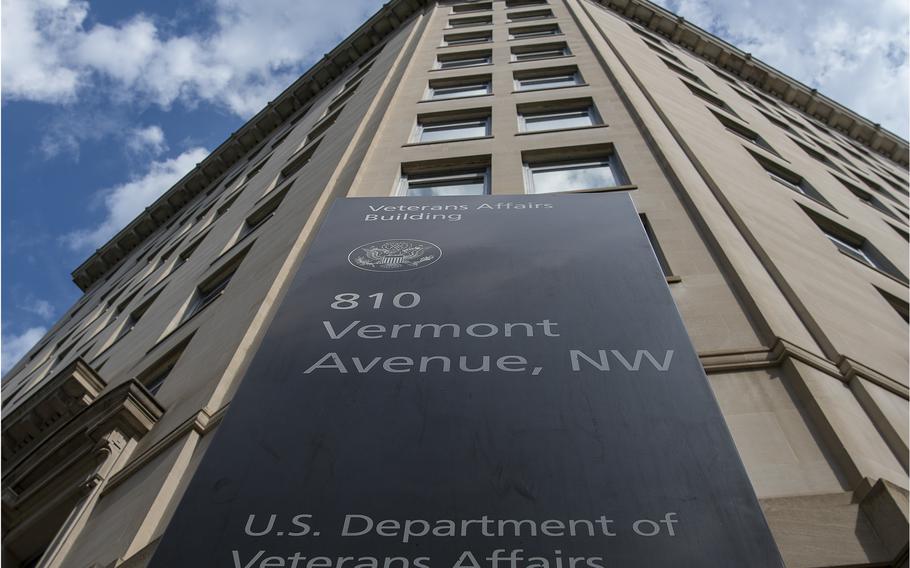
The Department of Veterans Affairs is pursuing a plan to adopt an agency-wide supply chain management system to track the acquisition and inventory of millions of goods, from pharmaceuticals to X-ray machines. (Carlos Bongioanni/Stars and Stripes)
WASHINGTON — Lawmakers sharply criticized the Department of Veterans Affairs for failing to provide a budget or keep them informed about a plan to modernize its supply chain management system that is projected to cost as much as $15 billion.
At issue is the VA’s plan to update the system for tracking the acquisition and inventory of millions of goods, from pharmaceuticals and X-ray machines to printer paper and headstones.
The VA is aiming for the adoption of an agency-wide supply chain management system for oversight of supplies that encompasses more than 60 different existing systems across more than 170 sites.
How the VA plans to integrate those diverse supply chain systems and effectively manage them was the focus of a hearing Tuesday of the House Committee on Veterans’ Affairs subpanel on technology modernization oversight.
Rep. Matt Rosendale, R-Mont., the subcommittee chairman, rebuked the VA for failing to provide regular updates to lawmakers about the status of the costly and complex project.
He said there does not appear to be an approved budget, blueprint or schedule for the project.
“The VA has been soliciting proposals from contractors to do this for nearly a year. Now we’re hearing that a contract award is imminent. But we still have only a rough idea of what the project may entail. The lifecycle cost estimate is stratospheric,” Rosendale said. “We don’t have any details about this.”
Michael Parrish, the VA’s chief acquisition officer, said the VA is pursuing a pilot program to examine each component for the new supply management system to measure functionality prior to signing a contract.
Parrish described the approach as a phased-in process that will not commit taxpayer dollars until the VA is assured each part of the system is fully operational and effective.
“The VA is not committing billions of dollars on Day 1,” he said. “Each component will be looked at as separate and distinct.”
The VA will focus on outcomes of the pilot program without trying to dictate how the system is engineered, Parrish said.
“We want our scrambled eggs on time and within budget, but we will not get into specific details” of the project, he said.
Rosendale said he sees the VA’s planned modernization initiative for the inventory management system as necessary, but he raised concerns about transparency in oversight of the project. He said the VA refused to disclose information to the committee about the project until 24 hours before Tuesday’s meeting, when it turned over 200 pages of documents.
“The VA may actually be preparing to pay a contractor to finish writing its work plan as scheduled. But we don’t have any details about this,” Rosendale said. The VA has an obligation “to report and request funding instead of keeping this committee in the dark.”
But Dewaine Beard, the VA’s principal deputy assistant secretary, said the VA only expects to commit to “modest funding” for this initial phase — a five-month pilot program.
Rosendale cited a March 2021 report by the Government Accountability Office that identified a lack of a comprehensive supply chain strategy by the VA for its “interrelated supply chain management initiatives.” The GAO report stated the large demand for medical supplies during the coronavirus pandemic revealed problems in the supply chain system for tracking and obtaining critical medical supplies.
“The broken supply chain was on display in 2020 when COVID-19 caught the VA completely unprepared, and medical center managers were desperately compiling and exchanging inventory lists and rationing supplies to their frontline,” Rosendale said.
The report concluded without an effective strategy in place to modernize its supply chain, the VA is unprepared to adequately handle future health emergencies.
The VA, in response, established an enterprise supply chain board in 2023 to steward the VA’s initiative to bring together its different systems under a single “governance structure” with defined roles and responsibilities, Parrish said.
But Rep. Keith Self, R-Texas, urged lawmakers to examine the project closely before it advances further, including how the VA plans to control costs for the system’s development.
“Congress needs to take a hard look at the nature of this project. How are you going to cap this thing? We need to look at this in full committee based on information that is just now getting out,” he said.